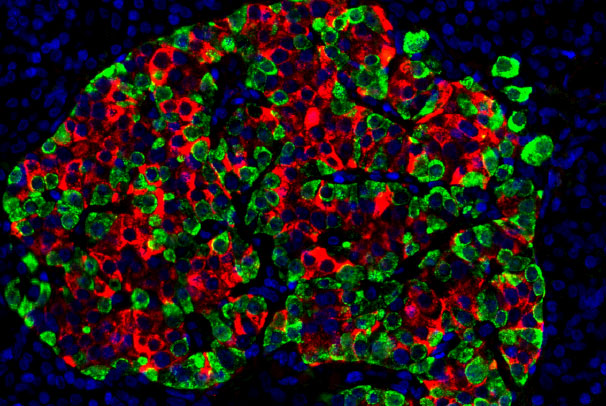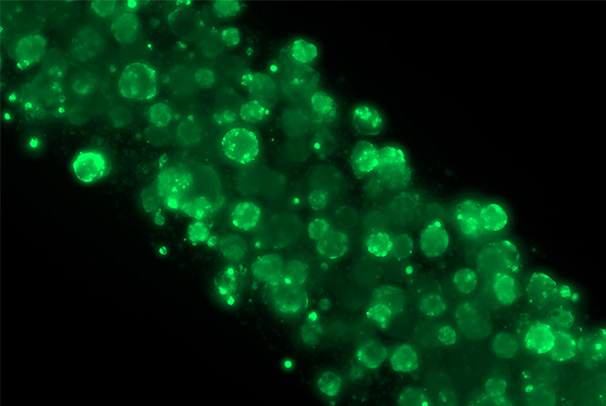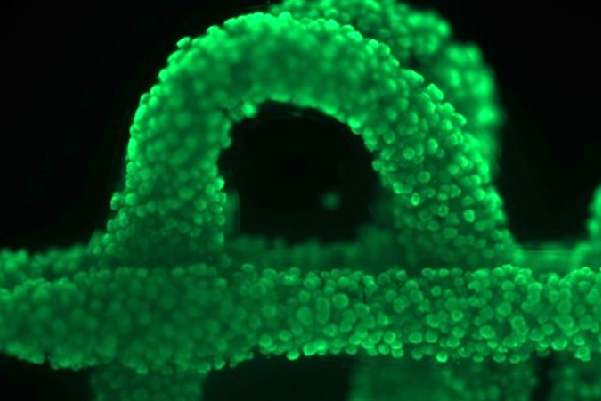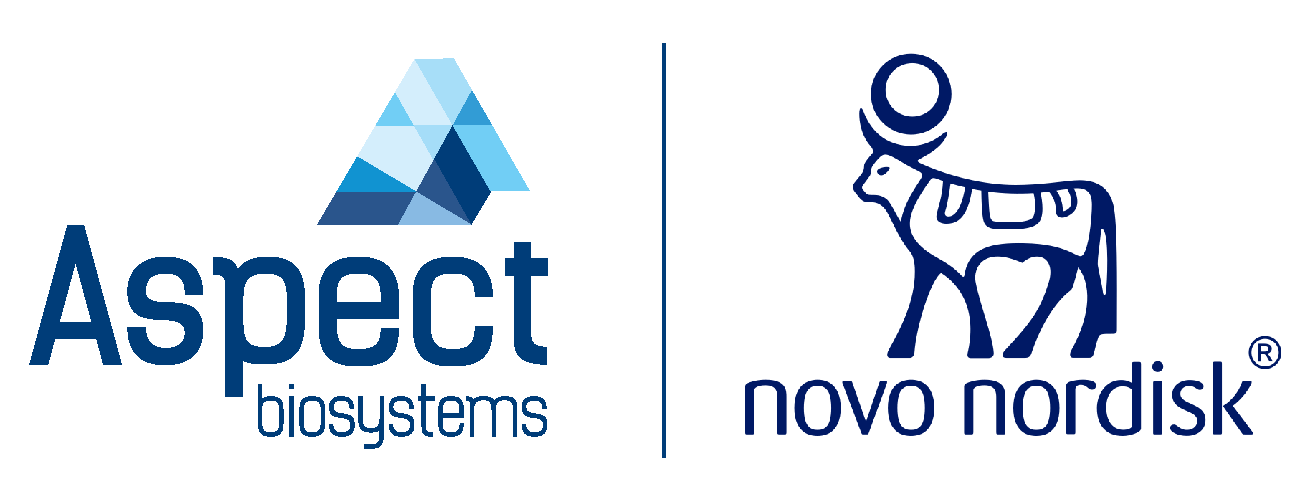
diabetes & obesity

rare endocrine disorders

liver diseases
Diabetes & Obesity
Diabetes and obesity are prevalent diseases that significantly affect quality of life and can result in serious complications that can be fatal. For people with type 1 diabetes, their pancreas is unable to appropriately sense glucose and release insulin. Standard treatments for this life-threatening disease require frequent monitoring, insulin delivery, lifelong vigilance, and exact a tremendous toll on patients and their families.
We are focused on developing Bioprinted Tissue Therapeutics (BTTs) to provide a functional cure for people living with diabetes and obesity, including pancreatic BTTs for type 1 diabetes.

Example:
Type 1 Diabetes
By bioprinting allogeneic stem-cell islet clusters encapsulated within immune-protective materials, we are creating functional and retrievable pancreatic BTTs, capable of sensing glucose and releasing insulin. These tissues are surgically implanted into the body to maintain normal glycemia without the need for immune suppression. This therapeutic would represent a transformative functional cure for type 1 diabetes patients dependent on insulin injections.
Therapeutic cell: Stem cell islet clusters
Stage of development: Undisclosed
*Partnered program with Novo Nordisk*

Rare Endocrine Disorders
Rare endocrine diseases are complex and potentially life-threatening conditions caused by impaired hormone production or signalling. In primary adrenal insufficiency, for example, the adrenal glands fail to produce enough cortisol, a key hormone regulating the body's stress response. Current treatments rely on daily hormone replacement therapy, which do not fully replicate natural circadian rhythms and are often associated with significant drug-related side effects. This can leave patients vulnerable to ongoing health challenges, including potentially fatal adrenal crises.
We are developing Bioprinted Tissue Therapeutics (BTTs) to provide a functional cure for an array of rare endocrine disorders, including adrenal BTTs for primary adrenal insufficiency.

Example:
Primary Adrenal Insufficiency
We are developing off-the-shelf, allogeneic cell therapies that can restore lost adrenal gland function, respond appropriately to hormone cues, and follow natural daily hormone rhythms. Adrenal BTTs would represent a breakthrough for patients suffering from primary adrenal insufficiency.
Therapeutic cell: Human adrenocortical cells
Stage of development: Preclinical
Liver Diseases
Liver diseases affect the body’s ability to process and metabolize nutrients; they can be genetic or acquired and can cause serious damage or even failure. Liver diseases and liver failure are becoming increasingly prevalent, and patients have limited options. There is a shortage of suitable liver donors and liver transplant recipients require life-long immunosuppression.
We are developing liver Bioprinted Tissue Therapeutics (BTTs) to provide a functional cure for an array of acquired and genetic liver diseases, including acute liver failure.

Example:
Acute Liver Failure
We are developing first-in-class, allogeneic cell therapies to restore lost or damaged liver function for patients with acute liver failure. These liver BTTs would represent a breakthrough for patients suffering from this acute disease.
Therapeutic cell: Stem cell hepatocytes
Stage of development: Preclinical
WHAT ARE BIOPRINTED TISSUE THERAPEUTICS?
- materials science
- cell biology
- 3D printing
- computer vision
We are pioneering the development of bioprinted tissue therapeutics to replace, repair, or supplement biological functions inside the body.
These implantable, allogeneic, cell-based therapies represent a paradigm shift in the traditional approach to regenerative medicine.
They can take on different forms — including retrievable implants or integrated tissues — to perform a variety of functions — including metabolic response, delivery of biologically active factors, or regeneration of damaged tissues.